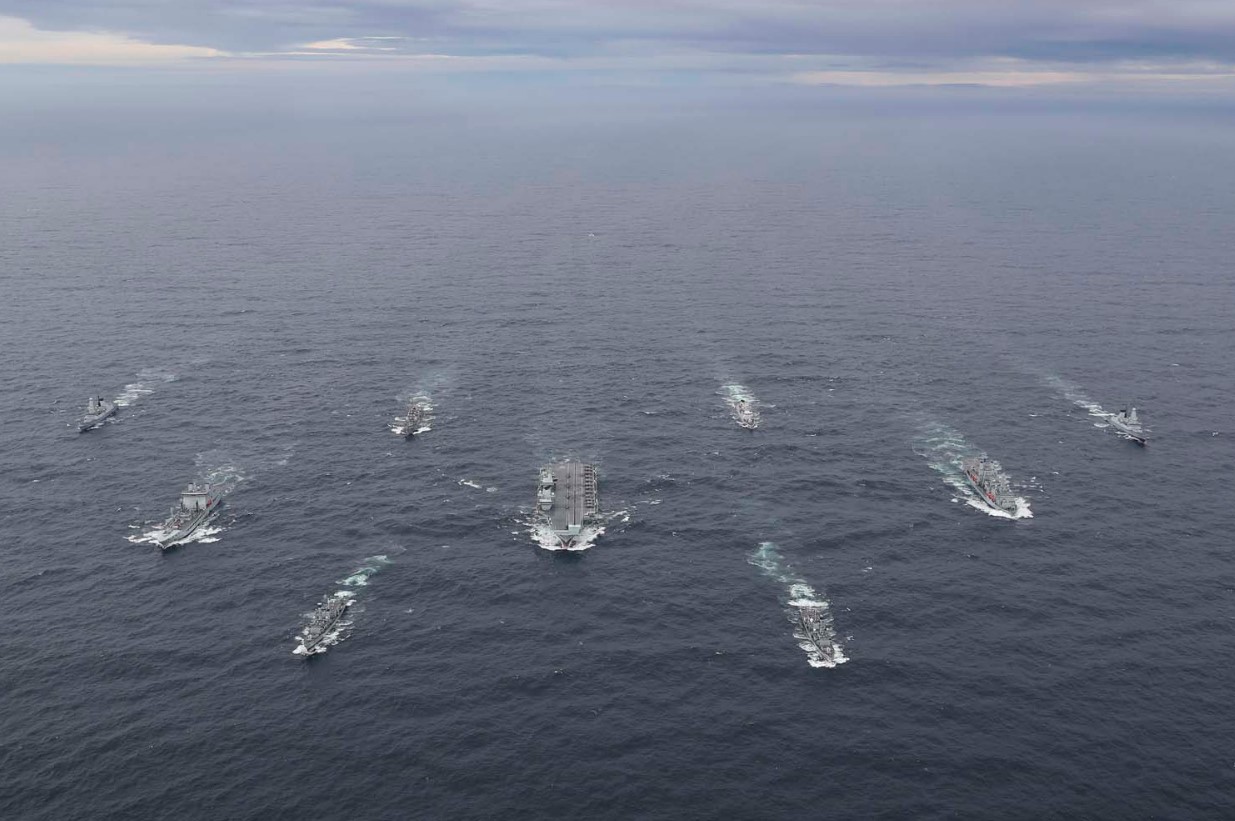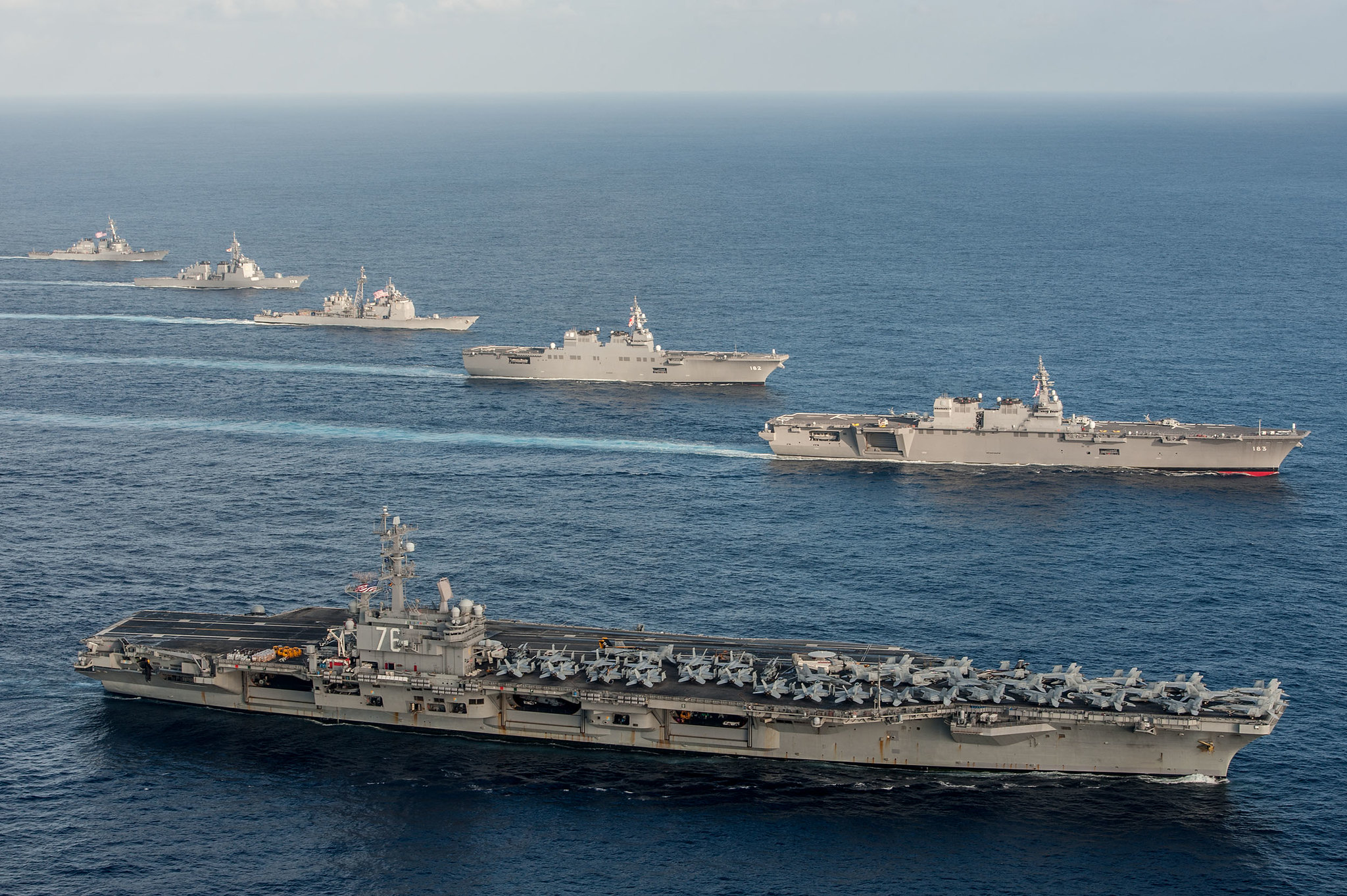

The Navy currently maintains eleven CSGs: two are tasked with training and certifying the Atlantic and Pacific fleets (CSG-4 and CSG-15, respectively), five are based in Virginia, three are based in California, and one-Carrier Strike Group 11-is forward-deployed in Japan. These formations typically consist of one nuclear-powered ‘supercarrier’ (over 1,000 feet long with 70-80 aircraft on deck), two guided-missile cruisers, two anti-aircraft destroyers, one frigate, two submarines, and a supply ship. In this context, the contemporary CSG was born. in comparison to global deterrence and the need to protect Transatlantic supply routes from Soviet submarines lest open conflict break out between the superpowers. With the end of open hostilities and the transition into the Cold War period, the battle capabilities of multi-carrier formations became less important to the U.S. By the end of the Pacific War, informed by several key battles, the US Navy began to outclass Japan by grouping several carriers of different sizes with cruiser and destroyer escorts to inculcate the mobile runways against attacks from air, surface, and submarine vantage points.

But, their powerful offensive capabilities make them prime targets for the enemy, further complicated by their conspicuous size.

They can move anywhere that there is a deep enough ocean, and the aircraft which take off from their decks can out-range the cannons of any surface ship by over ten times. Aircraft carriers are essentially fast and massive mobile airports. counterparts.) However, the organization of aircraft carriers in formation with smaller escorts emerged ubiquitously during the Second World War out of practical necessity. is unique among the world’s nations in sustaining a fleet of eleven large-deck, nuclear-powered aircraft carriers-more than double that of its closest competitors. (The UK, Indian, and Chinese navies each operate only two aircraft carriers of comparable size to their U.S. Biden International Affairs Personnel Tracker.At BAE Systems, we always stand by our customers and will continue to provide the UK’s armed forces with the data, information advantage and warfighting capabilities they need to influence the battle space. The importance of Carrier Strike Group to the nation was highlighted by the recent twinning of the Home of the Royal Navy, Portsmouth Naval Base and the home of the UK Lighning Force at RAF Marham, and we are proud to remain the key partner to the Royal Navy and the Royal Air Force in both those locations. We continue to support our customers by delivering the most sophisticated training programmes in the world for the pilots and flight crews of those F-35s and the sailors on the ships maintaining and upgrading the ships of the Carrier Strike Group at Portsmouth Naval Base, the home of the Royal Navy, as well as on deployment around the globe preparing the base for the future by making it 65% greener over the last 15 years and developing the next generation capabilities such as Type 26 frigates, autonomous boats and autonomous underwater weapons systems. They also design and manufacture the radars, combat systems, torpedoes and small boats that feature on those ships. Thousands of our employees across the country have worked on the development, production and integration of the Royal Navy’s Queen Elizabeth Class aircraft carriers, Type 45 destroyers, Astute submarines and the Lightning Force that makes up the Carrier Strike Group.

During the 20,000 mile voyage over a number of months, visiting the Mediterranean, Middle East and Indo-Pacific, the Carrier Strike Group’s first operational deployment will mark the culmination of decades of teamwork, pride and industry collaboration.


 0 kommentar(er)
0 kommentar(er)
